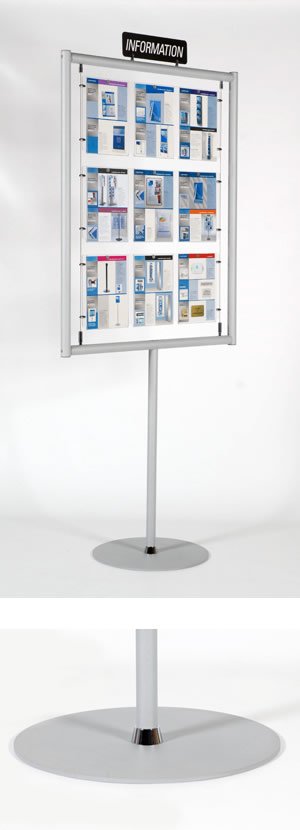Thermosetting powder coating
For display stands with coated metal parts, Geprom uses powder coating, a coating process used for metallic and non-metallic surfaces with an organic film which in addition to ensuring a decorative finish, protects against corrosion and aggressive agents.
 The electrostatic powder thermosetting coating process is based on the creation of a high voltage electrostatic field through which the parts become positively coated, while a flow of air directs the powder particles negatively charged towards the surface of the piece, on which they settle by the effect of attraction of the positive electrostatic field. In this way the treated pieces are covered by means of coating powder based on synthetic resins, polyester or epoxy.
The electrostatic powder thermosetting coating process is based on the creation of a high voltage electrostatic field through which the parts become positively coated, while a flow of air directs the powder particles negatively charged towards the surface of the piece, on which they settle by the effect of attraction of the positive electrostatic field. In this way the treated pieces are covered by means of coating powder based on synthetic resins, polyester or epoxy.
The coated parts are then treated in a firing furnace in which they reach a temperature ranging between 160 and 200°C, depending on the type of paint and thickness of the workpiece.
Following the heating process, melting and crosslinking phenomenon of the powders occurs, which finally produces a layer of homogeneous coating having thickness, grip and resistance.
The main advantages of the thermosetting powder coating are chemical stability, resistance to abrasion and corrosion, an attractive appearance of the treated surface, eco-compatibility (the thermosetting powders are free from solvents and heavy metals), and inexpensiveness related to the aspect of reducing waste (overspray is collected and reused allowing minimal product loss).
In order to increase the resistance to weathering, sometimes the surface of the pieces is pre-treated with an electrolytic galvanic zinc cycle before proceeding with the thermosetting powder coating. This process is used, for example, for display stands like B-Totem, T-Totem and Out-Totem











